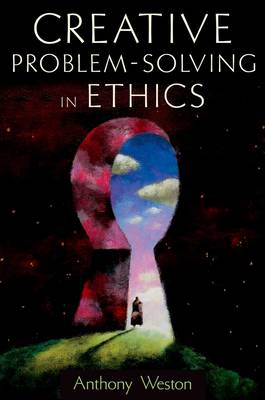
- Afhalen na 1 uur in een winkel met voorraad
- Gratis thuislevering in België vanaf € 30
- Ruim aanbod met 7 miljoen producten
- Afhalen na 1 uur in een winkel met voorraad
- Gratis thuislevering in België vanaf € 30
- Ruim aanbod met 7 miljoen producten
Zoeken
Omschrijving
This book offers a uniquely constructive set of tools for engaging complex and controversial ethical problems. Covering such practical methods as diversifying options, lateral thinking, reframing problems, approaching conflicts as creative opportunities, and many others, it shows how to find "room to move" inside even the most challenging ethical problems, and thereby discover new and productive ways to deal with them. The book features numerous exercises and applications that consider a wide range of familiar ethical issues--including the moral status of animals, the death penalty, poverty, drug use, and many others--and ends with some of the toughest: abortion, assisted suicide, and environmental ethics.
An ideal supplement for any general ethics course, Creative Problem-Solving in Ethics can also be used in more specific "applied" courses like bioethics, business ethics, and social ethics, as well as in critical thinking courses that emphasize ethics. In addition, it provides a concise and engaging introduction to creative thinking for workshop participants and general readers. From the very beginning of the book, readers will discover that creative thinking can offer imaginative and promising alternatives to seemingly intractable ethical dilemmas.
An ideal supplement for any general ethics course, Creative Problem-Solving in Ethics can also be used in more specific "applied" courses like bioethics, business ethics, and social ethics, as well as in critical thinking courses that emphasize ethics. In addition, it provides a concise and engaging introduction to creative thinking for workshop participants and general readers. From the very beginning of the book, readers will discover that creative thinking can offer imaginative and promising alternatives to seemingly intractable ethical dilemmas.
Specificaties
Betrokkenen
- Auteur(s):
- Uitgeverij:
Inhoud
- Aantal bladzijden:
- 96
- Taal:
- Engels
Eigenschappen
- Productcode (EAN):
- 9780195306200
- Verschijningsdatum:
- 28/06/2006
- Uitvoering:
- Paperback
- Formaat:
- Trade paperback (VS)
- Afmetingen:
- 153 mm x 210 mm
- Gewicht:
- 117 g

Alleen bij Standaard Boekhandel
+ 135 punten op je klantenkaart van Standaard Boekhandel
Beoordelingen
We publiceren alleen reviews die voldoen aan de voorwaarden voor reviews. Bekijk onze voorwaarden voor reviews.








